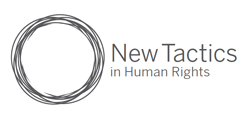Bringing Separated Families Together at a Border to Highlight Migrant Issues
Once a year, families torn apart by a broken immigration system gather at the US southern border between Texas and Mexico to briefly reunite.


Once a year, families torn apart by a broken immigration system gather at the US southern border between Texas and Mexico to briefly reunite.
Taboos are often created by outdated traditions and social norms, and misguided interpretations of religion. These taboos affect different segments of the community, such as women, minorities and people with disabilities. Taboos label, control choices and make people vulnerable to abuse and violation.
In the best of times, human rights advocacy requires constant tactical innovation. The onset of the COVID-19 pandemic in late 2019 generated huge additional challenges. In early 2020, the African Network against Extrajudicial Killings and Enforced Disappearances (ANEKED) in The Gambia was working on creating an in-person traveling memorialization exhibition of their “The Duty to Remember” project. They planned the launch as part of Human Rights Week 2020 organized by the University of Geneva in Switzerland.
“Dima With Each Other”, or "Always Together" in English, is an audio magazine on YouTube. It provides two important accessibility roles: it is an educational and entertainment tool that shares critical rights and health information including how to deal with the COVID-19 pandemic for people with visual impairments.
Recently, a number of videos have circulated online showing citizens celebrating the birthday of potholes on major roads in different countries. The videos are in protest against the condition of roads and streets, the delay in maintenance, as well as to deliver a message to those responsible to act. New tactics has gathered a few examples of those who used birthday celebrations as a way to protest against ineffective local governance.
Join New Tactics for a podcast conversation on the potential of podcasting in human rights activism and the power of narrative storytelling. Hosted by Gianna Brassil.
Summary Available
LGBTQI rights are fought for with a spectrum of tactics. In some states, gay citizens and allies march in pride parades and mark themselves with rainbows; in others, activists work in secrecy to protect their safety. Homophobia takes many forms and stems from a multitude of sources, each one different from the next. LGBTQI rights are human rights and must be upheld accordingly, but this lack of uniformity leads to distinct challenges in advocating for these rights on a global scale. Today, activists around the world confront a multitude of bigotry as they fight for the universal protection of queer individuals. In this conversation, participants discussed challenges and strategies for promoting LGBTQI rights through local and international actions across a range of situations.
Summary Available:
Protest art has been practiced throughout history, especially serving the anti-war movement in the mid-20th century. Today, art has become a powerful and international language to speak against all forms of human rights violations, along with other activism. For example, during the Arab Spring, the arts were used to make anti-authoritarian statements. The photographer and graphic designer, Nermine Hammam, captures the fundamental frailty of rule by force in the global community in her exhibition Cairo Year One by combining the realities of the conflict with a surreal and idealistic background. Tunisian folk-rock singer Emel Mathlouthi and rapper El General used music to rail against the state brutality and the suffering of Egypt’s youth and working class, which attracted considerable attention from protestors and transformed into a powerful protest song. The protest art of the Arab Spring has since joined a broader dialogue between protest art of the past and present, in mediums as diverse as books, film, performance art, and multimedia.
Summary Available
Data visualizations can be an incredible resource for human rights defenders, but understanding what data to use, as well as when and how to use data can be an overwhelming and daunting task. As of 2014, IBM found that each day, 2.5 quintillion bytes of data are created; that is a lot of information to sort and share. A simple online search will yield many statistics stating that humans understand and absorb information faster as visual representation than text-based. Interestingly, a 2010 study by S. Bresciani, et al found that even when accounting for cultural variances “the visual representation of information objectively increases understanding and recall.” In short, taking troves of data that human rights defenders come across in their work, both knowingly and unknowingly, and converting it into visual representations of that data, can be a powerful tool. However, used incorrectly data visualizations can be misleading and, in some instances, harmful or dangerous.